Solo Queue Mastering the Lone Wolf Approach
The digital battlefield often pits individuals against each other, not just as opponents, but as teammates thrust together by the capricious hand of matchmaking. Solo queue, the act of entering a competitive online game without pre-arranged allies, presents a unique challenge: success hinges not only on individual skill but also on the unpredictable dynamics of randomly assembled teams. This exploration delves into the intricacies of solo queue, examining its psychological impact, strategic nuances, and broader influence on the gaming community.
From the frustration of carrying incompetent teammates to the exhilarating triumph of a hard-fought victory against overwhelming odds, solo queue offers a rollercoaster of emotions. This journey dissects the various factors influencing success, from effective communication strategies to the critical role of matchmaking algorithms and their inherent biases. We’ll investigate how player psychology, team composition, and game mechanics interact to shape the solo queue experience across diverse game genres.
Defining Solo Queue
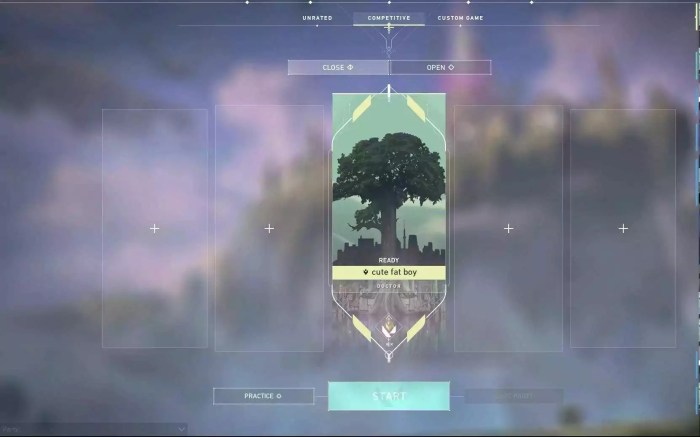
Solo queue, in the context of online gaming, refers to a matchmaking system where individual players are grouped together to compete against other similarly ranked solo players. It contrasts sharply with team-based queues, emphasizing individual skill and performance rather than coordinated teamwork. This system is designed to provide a fair and competitive environment for players who prefer to compete independently or lack a consistent group of teammates.
Solo queue differs from other queue types primarily in its focus on individual performance. Duo queues, for example, allow two players to team up, leveraging synergy and communication. Squad or team queues expand this further, allowing for even larger pre-formed teams. These team-based modes often necessitate strategic coordination and pre-game planning, whereas solo queue relies on individual skill, adaptability, and the ability to synergize with randomly assigned teammates. The experience is inherently more unpredictable in solo queue due to the lack of control over teammate skill and playstyle.
Examples of Games Utilizing Solo Queue Systems
Many popular online games incorporate solo queue systems. League of Legends, a multiplayer online battle arena (MOBA), heavily utilizes solo queue for ranked matches. Similarly, Overwatch, a team-based first-person shooter, offers a competitive solo queue mode. In Dota 2, another popular MOBA, solo queue is a common path for players to climb the ranked ladder. Even battle royale games like Apex Legends and PUBG often have matchmaking systems that prioritize solo play, though team-based modes are also available. These examples demonstrate the widespread adoption of solo queue across various genres.
Comparison of Solo Queue Experiences Across Game Genres
| Game Genre | Typical Team Size | Emphasis on Individual Skill | Teamwork Importance |
|---|---|---|---|
| MOBA (e.g., League of Legends) | 5v5 | High (laning phase, individual decision-making) | High (teamfights, objective control) |
| First-Person Shooter (e.g., Overwatch) | 6v6 | Moderate (aim, individual hero mastery) | High (coordinated pushes, ultimate usage) |
| Battle Royale (e.g., PUBG) | Solo, Duo, Squad | High (resource management, combat skills) | Variable (dependent on team size and strategy) |
| Real-Time Strategy (e.g., StarCraft II) | 1v1, 2v2 | Very High (macro and micro management) | Variable (dependent on team size) |
The Psychology of Solo Queue
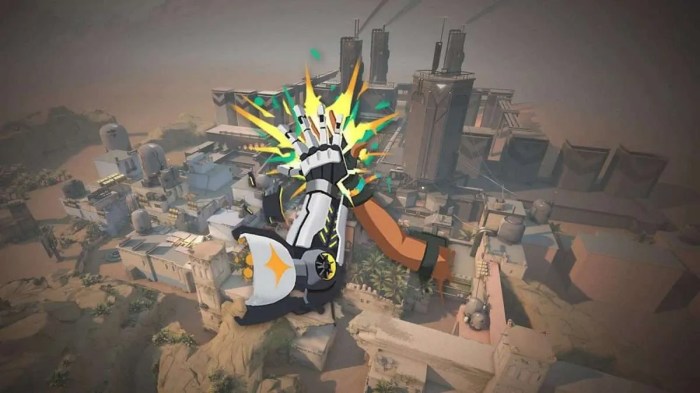
Solo queue, the crucible of individual skill and teamwork in online gaming, presents a unique psychological landscape. Players navigate a complex interplay of emotions, strategic decisions, and social interactions, all within the high-pressure environment of competitive matches. Understanding the psychological dynamics at play is crucial for improving performance and fostering a more positive gaming experience.
The emotional rollercoaster of solo queue is well-documented. Matches can evoke intense feelings of triumph following a hard-fought victory, a surge of satisfaction from a clutch play, or the disheartening sting of defeat. Conversely, frustration mounts readily with poor team coordination, frustrating losses, or individual mistakes. These emotional swings can significantly influence subsequent gameplay, potentially leading to impulsive decisions or a decline in performance.
Emotional Responses in Solo Queue
The spectrum of emotions experienced in solo queue is broad. Frustration, stemming from factors like teammate incompetence, unfair matchmaking, or personal errors, is arguably the most prevalent. This can manifest as tilt, a state of impaired judgment and emotional reactivity negatively impacting performance. Conversely, triumph, following a successful game, provides a powerful positive reinforcement, motivating players to continue improving. Other common emotions include anxiety, especially in high-stakes matches; boredom, from repetitive gameplay; and even anger, directed at teammates or opponents. The intensity of these emotions varies based on individual personality, the stakes involved, and the specific circumstances of the game.
Impact of Team Composition on Individual Performance
Team composition significantly impacts individual performance in solo queue. A well-balanced team, with players filling necessary roles effectively, provides a strong foundation for success. Conversely, a team lacking synergy or crucial roles can severely hamper individual efforts, regardless of skill level. For example, a team lacking a tank in a game requiring strong frontline defense will leave damage dealers vulnerable, limiting their effectiveness and increasing frustration. Similarly, a team lacking effective communication can lead to disorganized gameplay, hindering even the most skilled players. The presence or absence of players who complement each other’s strengths can make or break a match.
Factors Contributing to Toxicity and Negative Behavior
Toxicity in solo queue stems from a confluence of factors. Frustration, as previously discussed, plays a significant role. When players feel their efforts are undermined by teammates or the game system, they are more likely to express negative emotions. Anonymous online interactions can also contribute, reducing the inhibition against expressing anger or hostility. Furthermore, a lack of accountability and consequences for toxic behavior can exacerbate the problem. Finally, the competitive nature of solo queue, with its emphasis on individual achievement and ranking, intensifies pressure and increases the likelihood of negative interactions. A cycle of negativity can then develop, further escalating toxic behavior.
Hypothetical Study: Player Skill and Solo Queue Performance
A hypothetical study could explore the relationship between player skill, as measured by objective metrics like KDA (Kills, Deaths, Assists) and win rate in ranked matches, and solo queue performance, measured by rank achieved and consistency of performance over time. This study could involve a large sample of players across different skill levels. Researchers could analyze the correlation between objective skill metrics and solo queue success, controlling for factors such as game time, champion pool, and play style. The findings could provide valuable insights into the extent to which individual skill translates into solo queue success and identify potential areas for improvement in player development and matchmaking systems. For example, it could determine whether a higher KDA consistently correlates with higher rank, or if other factors, such as game sense and decision-making, play a more significant role. This data could then inform strategies to improve player experience and reduce frustration.
Strategies and Techniques in Solo Queue
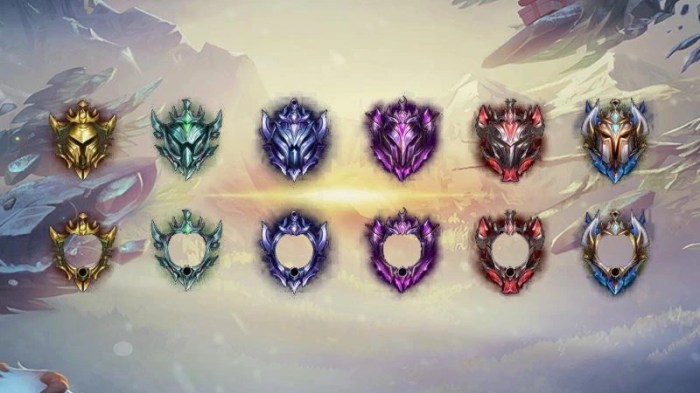
Success in solo queue hinges on a multifaceted approach that combines individual skill development with strategic game sense and effective communication. This section will explore effective strategies for improving individual performance, analyze different playstyles, and offer practical tips for navigating the challenges of solo queue.
Effective Strategies for Individual Performance Improvement
Improving individual performance in solo queue requires focusing on consistent self-improvement across several key areas. Consistent practice and dedicated learning are paramount. Players should prioritize understanding their chosen role’s strengths and weaknesses, mastering fundamental mechanics like last-hitting and map awareness, and continually refining their decision-making process under pressure. Analyzing replays of one’s own games is crucial for identifying areas needing improvement. Regularly reviewing professional matches can also expose players to higher-level strategies and decision-making processes.
Comparison of Playstyles and Their Effectiveness in Solo Queue
Different playstyles can yield varying degrees of success in solo queue, depending on the specific game, the player’s skill level, and the composition of their team. An aggressive playstyle, characterized by early game dominance and proactive engagement, can be effective when paired with a strong understanding of matchups and a willingness to take calculated risks. However, it also carries a higher risk of early game setbacks that can be difficult to recover from without reliable teammates. A more passive, farm-oriented approach prioritizes scaling and late-game teamfights. This style can be safer but requires excellent decision-making regarding when to engage and when to disengage. A balanced approach, blending aspects of both aggressive and passive play, often provides the most consistent results. This involves adapting to the current game state and the composition of both teams, choosing engagements carefully and focusing on maximizing individual impact.
Tips for Effective Communication in Solo Queue Matches
Effective communication in solo queue, even without voice chat, is crucial for coordinating team actions and achieving victory. Clear and concise pings are invaluable for signaling enemy locations, objectives, and immediate threats. Using the chat sparingly but strategically to convey crucial information, such as upcoming rotations or intended team compositions, can significantly improve coordination. Focusing on positive reinforcement and constructive feedback, even when facing setbacks, can foster a more collaborative atmosphere. Finally, avoiding unnecessary negativity or blame can contribute to a more positive and productive gaming experience for everyone.
Counter-Strategies Against Common Solo Queue Challenges
Solo queue presents several common challenges, including unreliable teammates, poor coordination, and unpredictable enemy strategies. One effective counter-strategy is to develop a strong understanding of your own strengths and weaknesses, focusing on what you can directly control rather than relying on your team. Adapting to changing game states and demonstrating flexibility in your playstyle is crucial for overcoming unexpected situations. Mastering split pushing and objective control can offset the lack of coordinated team play, while actively communicating your intentions through pings and chat messages can mitigate the negative impact of poor coordination. Finally, focusing on your own individual performance and maintaining a positive attitude, even in the face of adversity, can help minimize the frustrations often associated with solo queue.
The Impact of Matchmaking
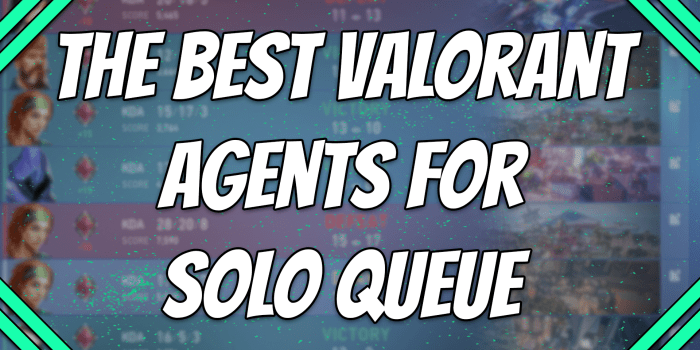
Matchmaking algorithms are the backbone of the solo queue experience, significantly impacting fairness, enjoyment, and overall player perception. A well-designed system strives to create balanced and competitive matches, fostering a positive and engaging environment. Conversely, flawed matchmaking can lead to frustrating one-sided games, impacting player retention and community health. Understanding the complexities of matchmaking is crucial for improving the solo queue experience.
Matchmaking algorithms aim to create even matches by considering various player factors. However, the inherent challenges in achieving perfect balance are significant, leading to inevitable discrepancies in skill levels and team compositions.
Challenges in Creating Balanced Matches
Creating perfectly balanced matches in solo queue is a computationally complex problem. The system must consider numerous variables, including player skill rating (often expressed as MMR or Elo), recent performance, champion pool, role preference, and even time of day. Furthermore, the need for near-instantaneous match creation adds another layer of difficulty. Finding ten players of roughly equal skill who are all available at the same moment and willing to play the same game mode is a significant logistical hurdle. Imperfect information further complicates the process; player skill is not static and can fluctuate based on various factors, making accurate assessment challenging. The system might accurately place a player at a certain skill level, but a recent losing streak might temporarily mask their true ability, leading to a less balanced match. Similarly, a player might be performing exceptionally well due to external factors unrelated to their overall skill, creating an equally skewed match.
Potential Biases in Matchmaking Systems
Various biases can inadvertently creep into matchmaking systems, impacting fairness. One common bias is the “ELO inflation” effect, where a player’s perceived skill might be artificially inflated due to consistent wins against weaker opponents. This can lead to a player facing significantly stronger opponents than their actual skill level warrants, resulting in a series of losses that then artificially deflate their rating. This cyclical effect can be detrimental to the player’s experience and the overall balance of the matches. Another potential bias stems from the limitations of the data used. If the system relies heavily on win/loss records without accounting for the nuances of individual performances (e.g., KDA, objective control, team contribution), it might misclassify players, leading to unbalanced matches. For example, a support player with a low kill count but high assist numbers might be unfairly ranked lower than a carry player with a higher kill count but poor team play. Finally, regional differences in player skill distribution can also impact matchmaking. A system calibrated for a region with a higher average skill level might lead to imbalanced matches in a region with a lower average skill level.
An Alternative Matchmaking System
A more robust matchmaking system could incorporate a multi-faceted approach. Instead of relying solely on a single numerical skill rating, it could employ a more nuanced system considering multiple skill dimensions (e.g., mechanical skill, strategic awareness, teamwork). This would allow for a more accurate representation of a player’s strengths and weaknesses. Additionally, the system could incorporate a “match quality” metric, prioritizing the creation of matches that are not only balanced in terms of skill but also in terms of team composition and role distribution. This might involve a more sophisticated algorithm that considers individual player preferences and past performance within specific roles. Finally, a system of dynamic adjustment based on real-time performance would help to mitigate the effects of short-term fluctuations in player skill. This could involve temporarily adjusting a player’s rating based on their recent performance, providing a more accurate reflection of their current ability. For example, a player on a winning streak might be temporarily given a higher rating, and vice versa, leading to more balanced matchups in the short term. This dynamic adjustment could be gradually incorporated into their long-term rating over time.
Solo Queue and the Broader Gaming Community
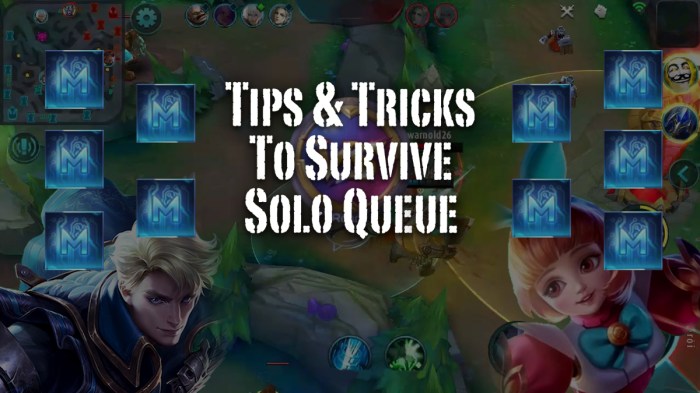
Solo queue, while seemingly a self-contained experience, significantly impacts the broader online gaming community. Its social dynamics, competitive landscape, and overall influence on game health are crucial aspects to understand for both players and developers. The experience of solo queue shapes player perceptions, influences community behavior, and ultimately affects the longevity of the games themselves.
Solo queue communities often exhibit a wide range of social dynamics, from intense competition and occasional toxicity to unexpected camaraderie and collaborative efforts. The anonymity afforded by solo queue can lead to both positive and negative interactions. Players might feel less inhibited in expressing themselves, sometimes resulting in unsportsmanlike conduct, but it can also foster a sense of independence and self-reliance among players. Conversely, successful teamwork in a solo queue match can lead to fleeting but rewarding bonds between strangers. The lack of pre-existing relationships means interactions are often more transactional, focused on immediate game objectives rather than long-term social connections.
The Competitive Landscape of Solo Queue
Solo queue presents a distinct competitive landscape compared to other forms of online gaming competition. Unlike organized teams or guilds, solo queue emphasizes individual skill and adaptability. Players are constantly matched against opponents of varying skill levels, forcing them to rely on their own abilities and strategic thinking. This contrasts sharply with structured esports teams, where players train together extensively, develop synergistic strategies, and build strong interpersonal relationships. The more casual nature of solo queue, however, allows for greater accessibility, drawing in a broader range of players compared to the more elite and highly organized competitive scenes. This accessibility is a double-edged sword, however, as it can lead to a wider disparity in skill levels within matches.
The Impact of Solo Queue on Game Health
Solo queue’s impact on the overall health and longevity of online games is multifaceted. High levels of toxicity and negative player behavior can lead to player burnout and attrition. Conversely, a well-designed and balanced solo queue system can foster a sense of accomplishment and encourage continued engagement. A healthy solo queue environment can attract new players and retain existing ones, leading to a thriving and active community. Games with poorly implemented solo queue systems often experience high player churn and a decline in overall player base. For example, the notoriously toxic solo queue environment in some MOBAs has contributed to player frustration and ultimately impacted the game’s long-term success. Conversely, games that prioritize fair matchmaking and incorporate effective reporting systems often maintain healthier player communities.
Suggestions for Fostering a Positive Solo Queue Environment
Creating a positive and supportive solo queue environment requires a multi-pronged approach from both game developers and the player community. The following suggestions aim to address key issues and promote a more enjoyable experience for all.
The following points are crucial for improving the solo queue experience:
- Implement robust reporting and punishment systems for toxic behavior. This includes clear guidelines on what constitutes unacceptable behavior and swift action against offenders.
- Improve matchmaking algorithms to ensure more balanced and fair matches. This reduces the frustration of facing significantly stronger or weaker opponents.
- Promote positive in-game communication and encourage teamwork. This could involve rewarding positive interactions or providing in-game tools for constructive communication.
- Develop educational resources to help players understand game mechanics and strategies. This empowers players to perform better and reduces frustration.
- Foster a sense of community through in-game events and social features. This creates opportunities for players to connect and build positive relationships outside of individual matches.
Visual Representation of Solo Queue Data
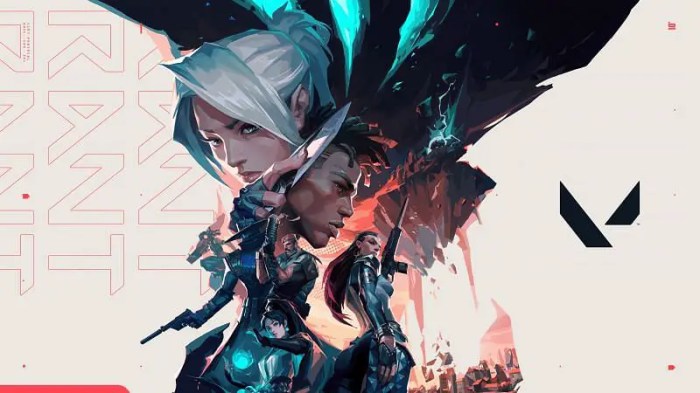
Visualizing solo queue data provides valuable insights into player performance, matchmaking effectiveness, and overall game balance. Effective visualizations can highlight trends and patterns that might otherwise be missed when analyzing raw data alone. This allows for a more nuanced understanding of the complexities within the solo queue environment.
Win rates across different skill levels can be effectively illustrated using a line graph. The x-axis would represent skill level, perhaps categorized into ranks (e.g., Bronze, Silver, Gold, Platinum, Diamond, etc.), while the y-axis would represent the average win rate expressed as a percentage. Each data point would represent the average win rate for players within a specific rank. A downward sloping line would indicate a decrease in win rate as skill level increases, which could reflect the increasing difficulty of higher ranks. Conversely, a relatively flat line might suggest a balanced matchmaking system, while a sharply increasing or decreasing line could indicate potential issues with rank distribution or matchmaking algorithms. For example, a consistently low win rate in a particular rank could point to a need for adjustments to the ranking system or to in-game tutorials to help players in that rank improve. This visualization would provide a clear and concise overview of win rate distribution across the skill spectrum.
Win Rate Distribution Across Skill Tiers
A line graph depicting win rates across different skill tiers would clearly show the relationship between rank and win rate. The x-axis would represent the various skill tiers (Bronze, Silver, Gold, Platinum, Diamond, etc.), while the y-axis would display the average win rate percentage for players in each tier. Each data point would be the average win rate calculated from a large sample size of matches within that specific tier. A downward trend in the line would suggest that higher tiers have lower win rates, reflecting the increasing competitiveness at higher skill levels. A steep drop in win rate between two consecutive tiers might indicate a significant skill gap between those tiers. For instance, a significant drop from Gold to Platinum might suggest that the Platinum tier requires a substantial improvement in skill compared to Gold. A flat line would suggest a balanced distribution of win rates across tiers.
Heatmap of Player Performance Across Map Areas
A heatmap can effectively illustrate player performance across different areas of a map in solo queue games. This visualization uses color intensity to represent the frequency or effectiveness of actions taken by players in specific map locations. The map itself would form the background of the heatmap. The variables used could include kill counts, deaths, objective captures, or even damage dealt within each area. Warmer colors (e.g., red, orange) could indicate high frequency or effectiveness, while cooler colors (e.g., blue, green) would represent low frequency or effectiveness. For example, a high concentration of red in the enemy team’s base area could indicate successful pushes and aggressive play, while a concentration of blue near a player’s own spawn might suggest passive or defensive play. By analyzing these heatmaps, players and game developers can identify areas of strategic advantage or disadvantage, potentially leading to adjustments in gameplay or map design.
Wrap-Up

Navigating the complexities of solo queue demands a blend of individual prowess, strategic adaptability, and a healthy dose of resilience. While the inherent randomness of team composition presents significant challenges, mastering the art of solo queue unlocks a deeper understanding of the game itself, fostering improved decision-making and refined gameplay. Ultimately, the solo queue experience, though often fraught with frustration, cultivates a unique brand of self-reliance and strategic thinking that benefits players regardless of their competitive standing. The journey may be turbulent, but the rewards – both in skill and personal growth – are undeniable.
Common Queries
What is the difference between solo queue and ranked matches?
While both involve competitive play, ranked matches usually track player skill and assign a ranking, whereas solo queue might not explicitly have a ranking system, focusing more on immediate match placement.
How can I improve my communication in solo queue without voice chat?
Utilize in-game pings effectively to communicate enemy locations, objectives, and requests for assistance. Clear and concise text chat can also be surprisingly effective for coordination.
Is solo queue always fair?
No, matchmaking systems are constantly evolving, and inherent biases can lead to unbalanced matches. Skill discrepancies among teammates remain a significant challenge in solo queue.
How does toxicity impact solo queue?
Toxicity negatively impacts team morale, leading to poor performance and a less enjoyable experience for everyone involved. It can create a hostile environment and discourage participation.



